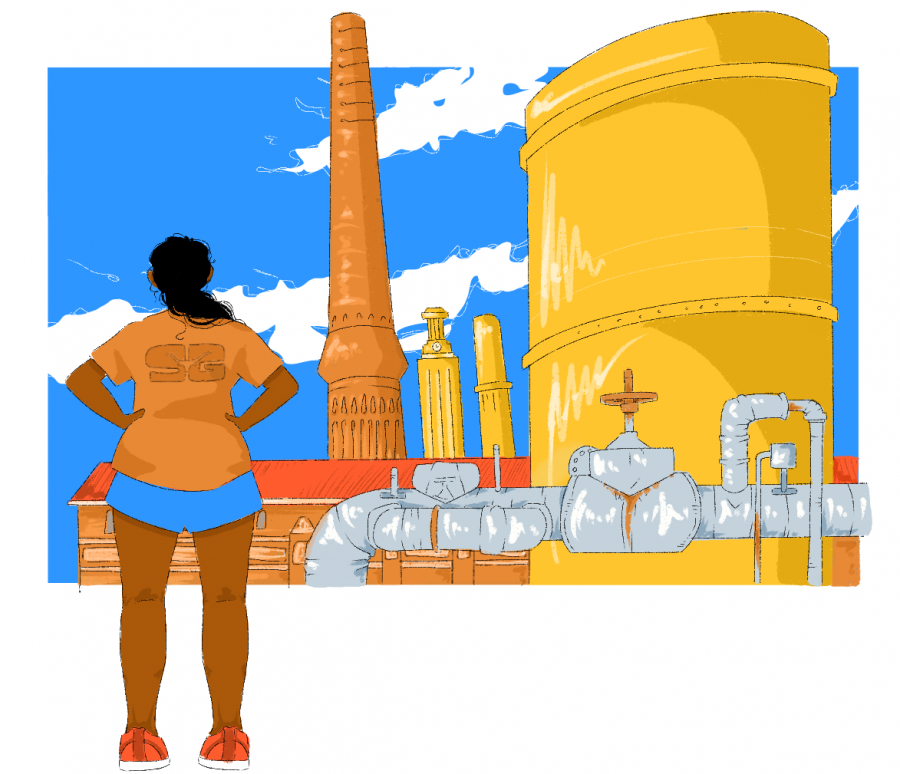Student Government passes carbon neutrality joint resolution
October 7, 2021
Editor’s Note: This article first appeared as part of the October 1 flipbook.
Last Tuesday, Student Government passed a joint resolution calling for a University carbon neutrality deadline of 2033.
The resolution calls on the University to form a committee to assess renewable energy production on campus, implement renewable energy infrastructure and establish a carbon neutrality deadline, which would have UT offset its carbon emissions by investing in sustainable alternatives. The resolution also recommends UT create a system to reduce the amount of carbon emitted from the University power plant.
“Right now, there’s currently no plan for UT to be carbon neutral,” University wide representative Braxdon Cannon said. “We do have sustainability goals that are created by the Office of Sustainability, but none of those goals have anything to do with carbon neutrality.”
UT did not respond to requests for comment on carbon neutrality plans at the time of publication.
One of the biggest on-campus carbon emitters is the Carl J. Eckhardt Combined Heat and Power Complex, which is one of the largest independent energy systems in the United States. The plant provides 100% of electricity and heating on campus and has allowed the University to have a utility system independent from the city of Austin for nearly a century, according to the Utilities and Energy Management website.
However, since 1996, the plant has generated 4,765,600 tons of carbon dioxide, averaging approximately 240,000 tons per year, according to the website.
“The way they’ve designed this power plant over the last few decades is to increase its efficiency every year,” Cannon said. “In doing that, they’ve made it harder and harder every year to wean off of it or to use other methods of energy.”
Cannon said UT will need to offset these carbon emissions through actions such as planting trees, purchasing renewable energy, using electric vehicles or creating a system to trap carbon emitted by the plant.
Changing the energy grid system to be more sustainable would be a complex process, said Jim Walker, director of sustainability for the Office of Sustainability.
“There’s been both the challenge of (what to) switch to because there’s just not enough room by any imagination to put enough solar on campus to replace the natural gas power plant,” Walker said.
A lot of students and professors want to see the University make public commitments to sustainability and acknowledge that they understand the dire situation we’re in, Cannon said.
“The University has yet to even acknowledge the climate crisis to say that human-induced climate change is a threat to students’ futures,” said Penelope Ackling, activism director for Students Fighting Climate Change.
Recently, other major universities, including the University of Michigan, Harvard University and University of California, Berkeley have committed to carbon neutrality by 2025 or 2026. Student Government’s joint resolution recommends a carbon neutrality deadline of 2033.
In September 2021, Austin City Council committed to reaching net-zero community wide greenhouse gas emissions by 2040, according to the city website. However, Ackling, a geography, urban studies and sustainability studies junior, said the University has not followed the same guidelines and hasn’t addressed equity considerations within the 2016 Sustainability Master Plan.
However, Ackling said the University also needs to focus on reducing carbon emission in the UT System, as well.
“The University leases these lands to oil and gas companies, they drill up oil and then we get a percentage of that revenue,” Ackling said. “Then, we reinvest that revenue into oil companies, things like Exxon and other really damaging companies like that.”
University spokesperson J.B. Bird said the oil and gas endowment managed by the UT System most likely is the largest source of University carbon emissions.
Ackling said although the SG initiative takes a step in the right direction, only so much progress can be made if UT doesn’t acknowledge it is a huge contributor to the climate crisis.
“We can buy electric vehicles and we can shut down our natural gas plant, but that is really only a small percentage of the University’s true carbon footprint,” Ackling said.












